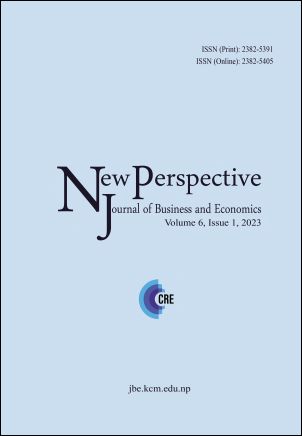Demographic Factors and Behavioral Biases of Individual Investors in Nepalese Capital Market
DOI:
https://doi.org/10.3126/npjbe.v6i1.58908Keywords:
behavioral finance, demographics, overconfidence bias, disposition effect, herding biasAbstract
This study aimed to analyze the relationship between demographic factors (age, gender, income, and occupation) and behavioral biases (overconfidence bias, disposition effect, and herding bias) while making share trading decisions in the Nepalese capital market. The research was conducted by distributing questionnaires to active investors with trading accounts in the Nepal Stock Exchange (NEPSE). The data was gathered from primary sources and used for statistical analysis through ANOVA and Chi-square.
The results of the analysis showed that there is a difference in overconfidence bias among different levels of income, age, and occupation, while a difference in herding bias among occupation and gender, whereas no difference is seen in the disposition effect among the demographic variables. This finding is consistent with other studies conducted on the behavioral biases of individual investors in the stock market.
Understanding the factors that influence investment decisions is crucial for investors, financial advisors, and policymakers. This study provides insights into the relationship between demographic factors and behavioral biases while making share trading decisions in the Nepalese capital market. The findings of this study can be used to develop effective investment strategies and improve investment decision-making.
Downloads
Downloads
Published
How to Cite
Issue
Section
License
Copyright (c) 2023 Manish Dev, Puspanjali Dahal, Ichhya Shrestha, Dristi Shrestha, Prashant Sah

This work is licensed under a Creative Commons Attribution-NonCommercial 4.0 International License.




